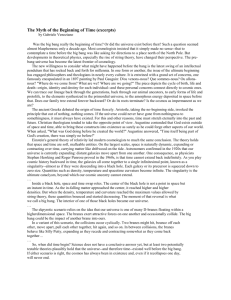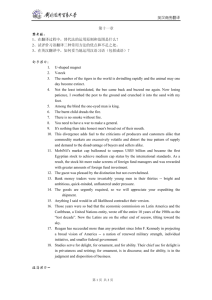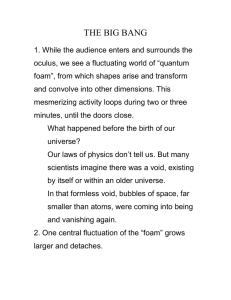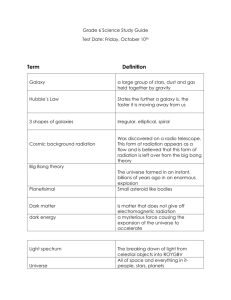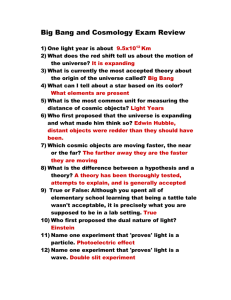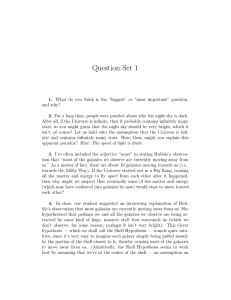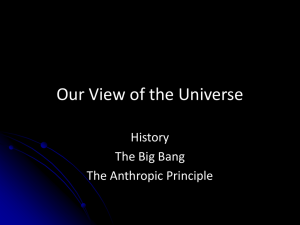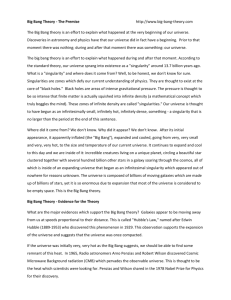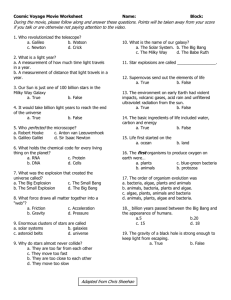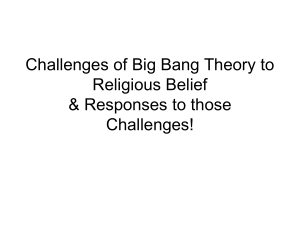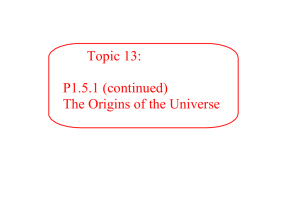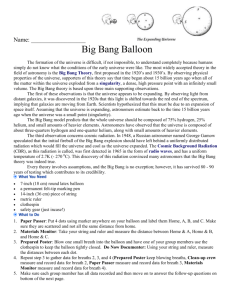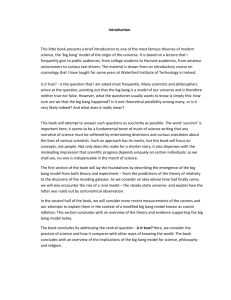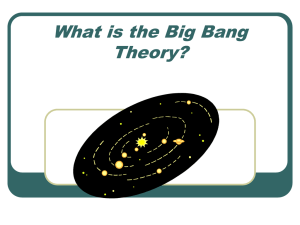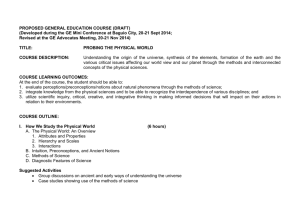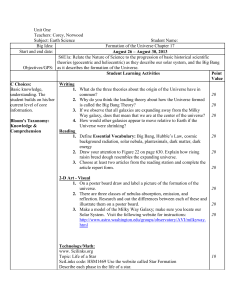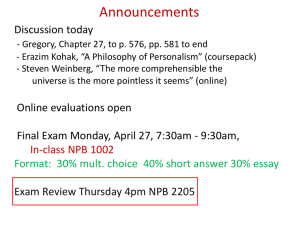Origin of the Universe
advertisement
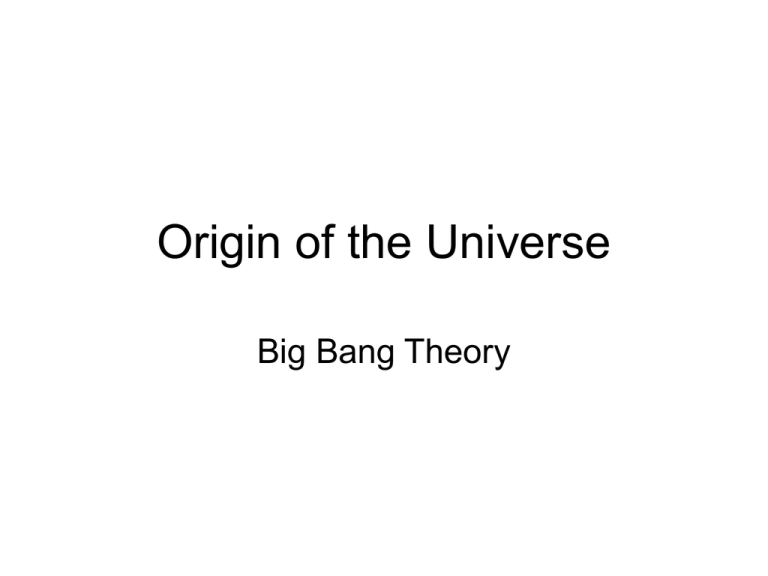
Origin of the Universe Big Bang Theory Big Bang Theory • Scientists now believe that the universe had a definite beginning, and it will have an end. • The ‘best’ explanation for the existence of the universe is currently the Big Bang Theory. • The Big Bang is thought to be an explosion from a SINGULARITY (a single point of density – where all known space was compressed into an infinitely small mass). • This happened 12-15bn years ago (12,000,000,00015,000,000,000 years) • They don’t really know what the singularity was or ‘how long’ it had been there. • Unlike Steady State Theory, the universe is not ‘filling up’ as it expands – the galaxies are moving further away from each other, with more space in-between. • In the first second after the explosion, gravity and electro-magnetism were ‘created’. • In the first minute the universe had grown to 1million billion miles (1,000,000,000,000) across • In the first 3 minutes, the heat (10 billion degrees celsius) causes nuclear reaction with lightest particles to make 98% of all matter in the universe. • The Big bang was thought to produce 2 main types of particle: matter and anti-matter. • Matter and anti-matter in equal quantities cancel each other out. The surplus is what the universe is made of. • After 500,000 years, particles from atoms • 500,000 years after that, atoms and molecules start to gather together and form galaxies and suns • Out of the first stars came H, He, C, O • Our solar system is about 4.5 billion years old. Evidence Supporting the Big Bang Theory 1. Hubble’s Law: the speed of the galaxies moving away from each other causes a change in the light spectrum, ‘red shift’. 2. Background radiation: We can still detect radiation from an explosion of this size – the radiation is the same everywhere on earth (TV static, etc). 3. Composition of Older Galaxies: Analysis of light from galaxies towards the ‘outside’ of the universe confirm theories about the early universe. They are made up of approx 93% H, 7% He, and trace Li But… 1. Cosmologists cannot follow the evidence right back to the origin of the Big Bang 2. There is observable evidence to count for 90% of the explosion (10.5bn years) – no light to be measured from other 10% 3. The other 10% is only ‘known’ through hypothetical mathematical simulations – they are only theoretical. Religious Use of the ‘Gap’ 1. As science is not 100% certain about the cause of the Big Bang, it is reasonable to posit God there (no evidence against this) – this is a ‘God of the Gaps’ approach 2. Some facts about the world might always be beyond science – even if we do figure out all of the processes behind how we got here, it still does not answer why we are here. There could always be an ultimate power behind it all. This is an area of faith. Conclusions 1. Spontaneously created from nothing (like Quarks appear to be) – all natural laws etc have developed randomly over time 2. There are basic laws / creative powers ‘behind’ nature that explain how it has come do develop the way it has. This creative power is the final explanation of the universe (which some people also call God)


